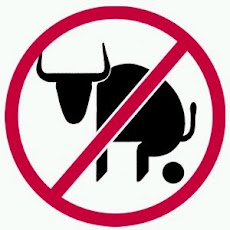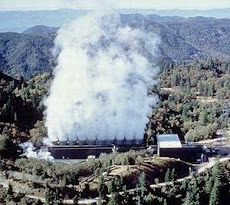
By MOISES VELASQUEZ-MANOFF
Christian Science Monitor
Sunday, February 22, 2009
In 1993, Washington State classified its Columbia Basin Pygmy rabbit, a burrowing one-pound resident of sagebrush thickets, as endangered. Farming and other human activity had greatly limited the deep-soil habitat available to the bunny.
In 2001, the US Fish and Wildlife Service designated the rabbit, one of only two burrowing species in North America, as "endangered." Alarmed by the animal's continuing decline, that year state officials captured 16 rabbits and began a captive-breeding program to try to ensure the rabbits' continued existence. By 2003, fewer than 30 rabbits lived in the wild, down from 250 in 1995. By 2004, they were all gone. For many, the disappearance of this tiny denizen of sagebrush thickets is a cautionary tale. Captive breeding programs are a noble last resort, they say. But in this case, not enough was done to save the wild population, they charge. While several factors outside of scientists' direct control contributed to the rabbits' demise -- disease, fire, loss of genetic diversity, and habitat fragmentation, in particular -- one factor squarely within human control was not addressed soon enough: livestock grazing. Although the state had recognized the rabbit as threatened in 1990, cows weren't taken from the state-owned Sagebrush Flat, the bunny's last known home, until 2001. Here, the tale of the pygmy rabbit intersects with a long-raging acrimonious debate in the U.S. West. Just over half the land in the West is public land. And what are public lands for -- the preservation of "pristine" nature or resource extraction?
Historically, management of these lands by state and federal agencies has favored resource extractors far more than conservationists would like. But as western economies change and demographics shift, this emphasis on extraction makes less and less sense, economists say.
Meanwhile, attempts to reintroduce captive-bred pygmy rabbits into the wild have so far failed. Of 20 freed in 2007, predators killed 18. Scientists returned the remaining two to captivity. With genetic diversity low, in 2005 scientists added Idaho pygmy rabbits, a close relative. The hybrid offspring were more robust. But in 2006, the last purebred male rabbit died. In coming years, scientists plan to attempt reintroduction of the hybrid rabbit, three-quarters native, again. But the pure Columbia Basin Pygmy Rabbit is now genetically extinct. Did cattle push the rabbits over the edge?
Steve Herman, a biologist emeritus at Evergreen State College in Olympia, Wash., says cattle may have pushed the animals over the edge. At the site, scientists observed trampled rabbit burrows and broken sagebrush, which the rabbit needs for both food and protection from predators. When cows were finally removed, "it was too late," he says. "We've lost a life form, and it's likely that our species (is) responsible."
Matthew Monda, the Washington (State) Department of Fish and Wildlife's (WDFW) wildlife program director for Region 2, counters that although observers had noted trampled burrows and the rabbits were in obvious decline, there was no decisive evidence that grazing was responsible. In fact, he adds, since cows and rabbits had coexisted for perhaps 100 years to that point, some worried that removing cows might make things worse. WDFW initiated a study to determine "if the grazing that occurred on the area was good, bad, or ugly." But when the rabbit populations declined precipitously, the study was halted and the cows removed. Given the stakes, why not just play it safe? Mr. Monda turns the question around: What's the most conservative choice, to remove cows and thereby change conditions, or to keep conditions the same and leave cows on the land? "What's the right answer? I don't know," he says. But "for multiple generations, the area had been grazed. And it was the last place that had rabbits."
RANCHERS ARE BULWARKS TO DEVELOPMENT
Ranchers view themselves as natural stewards of the land. Who knows and cares for the land better than they do? Often abutting public land, working ranches are bulwarks against out-of-control development, say pro-ranchers. Subdivisions -- further habitat fragmentation - are worse for endangered species than are cattle, they argue. In recent years, this historically polarized debate has seen what Courtney White, cofounder of the Quivira Coalition in Santa Fe, N.M., calls the emergence of "the radical center." In an effort toward sustainability, "progressive" ranchers are seeking to apply lessons learned from ecological science. But, say some, even if better management can diminish livestock's harmful impact, cows, an exotic species, shouldn't wander the semiarid western landscape for one simple reason: "There's only so much biomass out there," says George Wuerthner, coeditor of "Welfare Ranching." "If the majority of forage is going into a cow, it's not there for all the other life forms."
The forebears of American cattle evolved in parts of Eurasia much wetter than the US West. They gather and loiter near water. Much of the damage caused by cattle, scientists say, is from their impact on waterways. They can denude riverbanks, leading to erosion and muddy water. The loss of shade-giving plants raises water temperatures. Native fish species that have evolved in clear, cold water may suffer. Nesting birds lose habitat.
OTHER SPECIES AFFECTED BY CATTLE
Katie Fite, biodiversity director at Western Watersheds Project, a conservation group in Boise, Idaho, lists species that are among those negatively affected by grazing: the sage grouse, the willow flycatcher, the yellow-breasted chat. Reptiles and amphibians like collared lizards and spotted frogs also suffer, she says. A 2005 report by the US Government Accountability Office found that grazing on public lands cost taxpayers $115 million yearly. Ranching critics say that the current grazing permit price -- $1.35 per cow-calf pair per month - is at least an order of magnitude too low. This subsidy, they say, is greatly responsible for much of the degradation on public lands in the West. Humans get a little meat at the expense of wolves, grizzlies, bison, birds, and trout -- intact functioning ecosystems.
"We ought to leave the West mostly for wildlife," Mr. Wuerthner says. "That's where it does really well, and it can't be substituted somewhere else."
OTHERS SEE A MORE COMPLICATED PICTURE
Rick Knight, professor of wildlife conservation at Colorado State University, Ft. Collins, says it's not so simple. The fate of public and private lands are intertwined in the West. Whither goes one, so goes the other, he says. "If you want to save our natural heritage, you have to save both public and private," Professor Knight says. "They are interlaced."
Mark Brunson, a professor in the Department of Environment and Society at Utah State University, Logan, says that without low-cost grazing permits, many ranchers would go out of business. But it's no throwaway subsidy. If done sustainably (as he and others say it can be), ranchers provide an invaluable service. They supply locally raised beef for a burgeoning locavore movement. Less tangible is the "living cowboy culture" they provide. "The culture of ranching, which is also part of the American psyche, is also important," he says.
CULTURAL HERITAGE VS. LAND AND SPECIES PRESERVATION
To many, this last argument falls flat. Destructive professions shouldn't be subsidized, no matter how iconic. If the concern is development, address it directly with zoning laws.
Demographic shifts long under way may change this debate. If the question is what the public values more -- a working landscape or a pristine one -- the "keep it pristine" camp is on the rise. (Disturbed by rapid development, even farmers and ranchers have begun to push for more landscape-friendly zoning.) Analysis of the past 40 years of economic growth show that preserving nature is the better long-term investment, economists say.
With its expanses of relatively pristine nature and a modern infrastructure, the US West is unique, says Ray Rasker, executive director of Headwaters Economics, a nonprofit in Bozeman, Mont. The region has long been a magnet for immigrants. But late-20th-century arrivals were not, as they once had been, mostly people seeking to work the land. Resource extraction, once a mainstay, is an ever-shrinking portion of western economies. Profound economic, demographic shifts under way
Between 1970 and 2000, nonlabor jobs fueled 86 percent of this growth. Mining, timber, and agriculture (including ranching) contributed only 1 percent. Now, 93 percent of jobs in the West have no direct link to public lands, says Rasker. But wilderness areas, in conjunction with infrastructure like airports, correlated closely with areas that saw the greatest growth.
"The major contribution is that it creates a setting," he says, and that's what immigrants want. Conserving rather than exploiting nature makes more economic sense, he says. People move here to live near nature.
Land-management agencies have been slow to recognize the new role of unspoiled public lands as an amenity, he says. But they're coming around. The marked "blue shift" in the politics of Western states in the recent election suggests a more conservation-minded public.
For Thomas Power, an economist emeritus at the University of Montana, Missoula, the puzzle is why the shift didn't come sooner. He attributes the inertia to the nation's love affair with the idea of ranchers.
"People move here partly to play out the fantasy of being a cowboy," he says. "Rather than having attitudes different from long-term residents, they were trying to imitate or share in many of those attitudes."
*Click on title above to see original article and place for public comments.

























